If your Calathea is drooping, it’s a sign that something is wrong. Most likely, it’s not getting enough water or light. Keep reading to learn more about the signs, causes, and solutions for a drooping Calathea.
Causes of Calathea Drooping
There are a few reasons your Calathea may be drooping. One reason could be that it is not getting enough water and is dehydrated. Another possibility is that it is getting too much sun and is sunburned. Finally, it could be that the temperature is too cold for it. Move it to a warmer spot in your home. Move it to a shadier spot. Check the soil to see if it is dry and water accordingly.
Nictinasty
If your Calathea is drooping, it’s likely due to one of three reasons: underwatering, overwatering, or low humidity.
Underwatering is the most common reason for drooping Calathea leaves. The leaves will begin to droop when the plant is thirsty, so make sure to water your Calathea regularly.
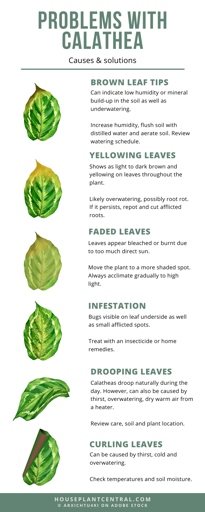
Overwatering can also cause drooping leaves. If the leaves are wilting and yellowing, it’s a sign that the plant is getting too much water. Allow the soil to dry out between waterings.
Calathea prefer high humidity, so if the air in your home is dry, try misting the leaves or setting the plant on a pebble tray. Low humidity can also cause drooping leaves.
Lack of Water Make the Plant Droopy
If you allow the plant to remain dry for too long, the leaves will start to turn brown and eventually die. When watering your Calathea, be sure to use room temperature water and water the plant until the soil is evenly moist. If you notice that your Calathea is drooping, it is likely due to a lack of water. The leaves of the plant will start to droop when the soil is dry, and the plant will need to be watered immediately. Allow the excess water to drain away and do not water again until the soil is dry. If you notice that your Calathea is drooping frequently, you may need to adjust your watering schedule or the type of water you are using.
Water When The Soil Dries Up
If the soil is too dry, the leaves will droop. The best way to water your Calathea is to use lukewarm water and to water it in the morning or evening. Be sure to water the soil, not the leaves, and to keep the soil moist but not soggy. If the soil is too wet, the leaves will yellow. When the soil around your Calathea dries up, it’s time to water it.
Overwatering Damages the Root System
To avoid overwatering, water your Calathea when the top inch of soil is dry. The leaves will start to droop and the plant will eventually die. When you overwater your Calathea, it’s not getting the oxygen it needs and the root system suffers.
How To Fix
If it is, water your Calathea deeply and evenly until the soil is moistened. The first step is to check the soil to see if it’s dry. If the soil is already moist, check to see if the pot has drainage holes. If it doesn’t, water your Calathea less frequently. If your Calathea is drooping, it’s likely because it’s not getting enough water.
If you think your Calathea is getting enough water but it’s still drooping, it might be because the pot is too small. Repot your Calathea in a pot that’s 2-3 inches wider and make sure it has drainage holes. When roots are cramped, they can’t take up water as efficiently.
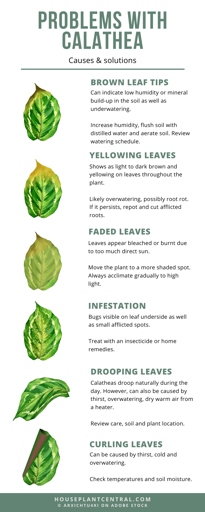
Calatheas like humid environments, so try misting your plant daily or setting it on a pebble tray. If your Calathea is drooping and the soil is moist, it might be because the air around it is too dry. You can also try moving it to a more humid room, like the bathroom.
Lack of Nutrition
There are a few things that can cause this lack of nutrition including: Lack of nutrition is often the cause of calathea drooping. The leaves of the calathea plant are its food storage organs and when they droop, it is a sign that the plant is not getting enough nutrients.
If they are not getting enough light, their leaves will start to droop. -Not enough light: Calathea need bright, indirect light to thrive.
If the soil is allowed to dry out, the leaves will start to droop. -Not enough water: Calathea need to be kept moist at all times.
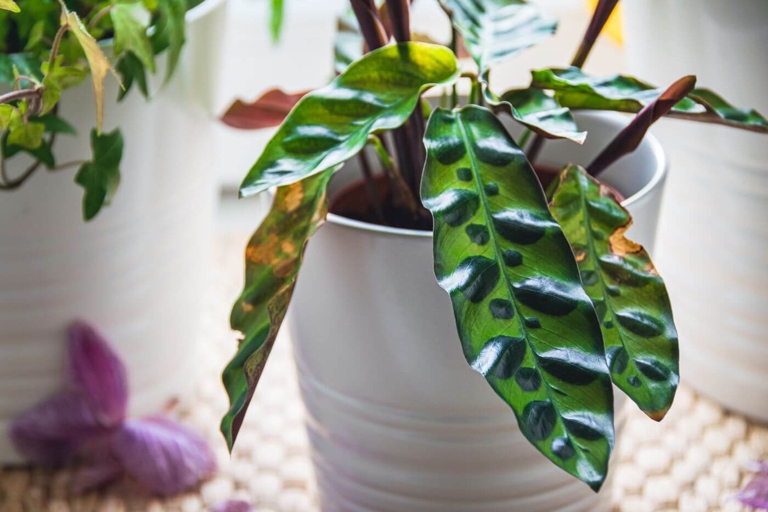
-Poor drainage: If the soil does not drain well, the roots of the calathea can start to rot, causing the leaves to droop.
If it is not, move it to a brighter spot. First, make sure the plant is getting enough light. If you think your calathea is drooping due to a lack of nutrition, there are a few things you can do to help. Second, make sure you are watering the plant regularly and that the soil is not allowed to dry out. If it does not, you may need to repot the plant into a pot with better drainage. Third, make sure the soil has good drainage.
Apply a Balanced NPK Fertilizer
Applying a balanced NPK fertilizer will help to replenish the nutrients in the soil and help your plant to recover. If your Calathea is drooping, it’s likely due to a lack of nutrients.
Water the plant well after applying the fertilizer. Over-fertilizing can be just as harmful as not fertilizing at all. When applying fertilizer, be sure to follow the instructions on the package. Apply the fertilizer around the base of the plant, being careful not to get any on the leaves.
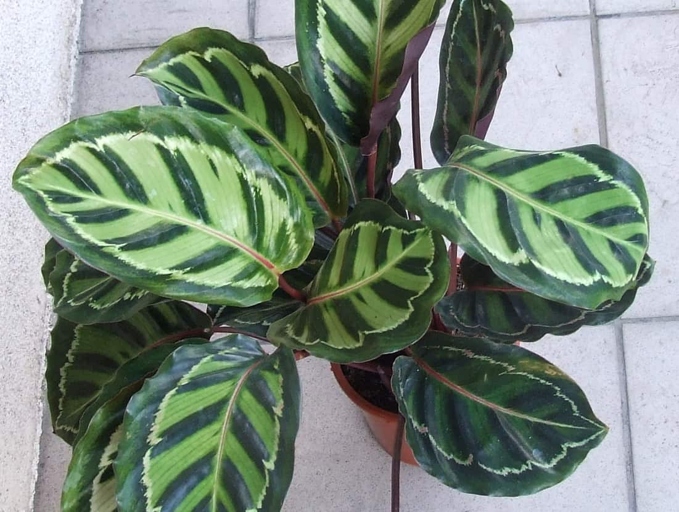
Be sure to check for these other issues and address them accordingly. If your Calathea is still drooping after fertilizing, it may be due to other issues such as too much or too little water, too much or too little light, or pests. With a little care, your Calathea should soon be back to its healthy self.
Temperature Stress
Calathea like to be kept moist, but not soggy. Calathea are tropical plants that thrive in warm, humid environments. There are a few reasons why your Calathea may be drooping. If your plant is still drooping after adjusting these factors, it may be suffering from a disease or pest infestation. If the temperature drops below 60 degrees Fahrenheit, your plant will start to experience stress. Another reason for drooping leaves could be that the plant is not getting enough water. One reason could be that the temperature is too cold for your plant. Allow the top inch of soil to dry out before watering again.
How To Fix
If your Calathea is drooping, it’s likely due to one of four reasons: too much sun, too little water, too much fertilizer, or pests. Each of these can be easily fixed with a little bit of effort.
Move it to a spot that gets less sun and it should perk back up within a few days. Too much sun: If your Calathea is getting too much sun, it will start to droop.
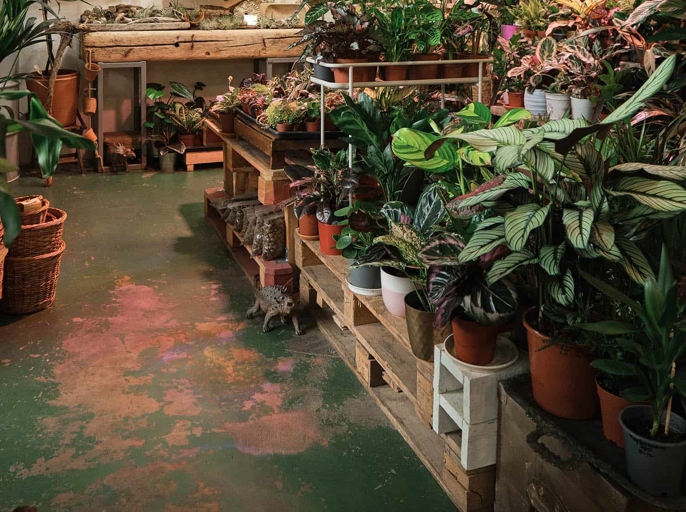
Too little water: If your Calathea is not getting enough water, it will start to droop. Water it thoroughly and it should perk back up within a few hours.
Too much fertilizer: If you’ve been fertilizing your Calathea too much, it will start to droop. Cut back on the fertilizer and it should perk back up within a few days.
Pests: If your Calathea has pests, it will start to droop. Treat the pests and the Calathea should perk back up within a few days.
Low Humidity
Calathea thrive in humid environments and require regular misting to maintain their moisture levels. If you notice your Calathea drooping, it’s likely due to low humidity. If your home is particularly dry, you may need to invest in a humidifier to help keep your plant healthy.
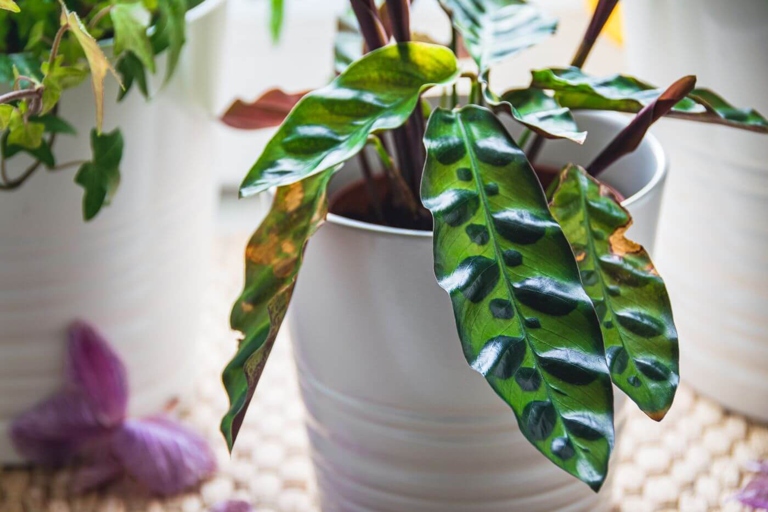
In addition to drooping, low humidity can cause Calathea leaves to turn brown and crispy. If you see these signs, increase the humidity around your plant by misting it more often or moving it to a room with higher humidity. With proper care, your Calathea should recover and return to its vibrant self in no time!
Increase Humidity to 60%
Another way is to place your Calathea plant on a pebble tray. If your Calathea is drooping, it could be a sign that the humidity in your home is too low. One way is to use a humidifier. There are a few ways to increase the humidity around your Calathea plant. This will help to increase the humidity around the plant. If you live in a dry climate, you may need to mist your Calathea plant daily to keep the humidity levels up. Calathea plants thrive in humid environments, so it’s important to keep the humidity around them at 60%.
Repotting Stress
One of the most common reasons why your Calathea may be drooping is because it’s experiencing repotting stress. The best way to help your Calathea recover from repotting stress is to give it time to adjust to its new environment. This is especially true if you’ve just recently repotted it or moved it to a new location. With a little time and TLC, your Calathea should recover from repotting stress and be back to its beautiful, vibrant self in no time! When a Calathea is first repotted, it’s roots are disturbed which can cause the plant to become stressed. Keep the soil moist but not soggy and make sure the plant is in a location where it will receive bright, indirect light.
How To Fix
If your Calathea is drooping, it’s likely due to one of three reasons: too much sun, too little water, or too much fertilizer. Here’s how to fix it:
If your Calathea is drooping due to too much sun, move it to a shadier spot. And if it’s drooping due to too much fertilizer, cut back on fertilizing. If it’s drooping due to too little water, water it more frequently.
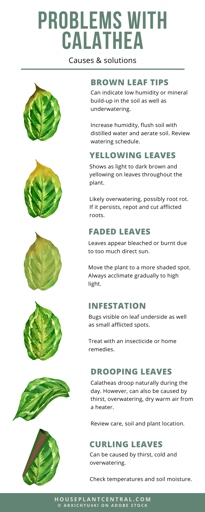
But if it doesn’t, there are a few other things you can try. In most cases, simply fixing the environment your Calathea is in will cause it to perk back up.
If this is the case, you’ll need to replant your Calathea in fresh, well-draining soil. First, check the roots. If they’re mushy or black, they may be rotting.
If you see any pests on your plant, remove them and treat the plant with an insecticide. Second, check for pests.
Finally, if all else fails, you may need to start over with a new plant. But don’t despair – with a little care, your new Calathea will be thriving in no time.
Poor Quality Water
If you notice your Calathea drooping, it could be a sign that the plant is not getting enough water. The leaves of the Calathea will start to droop when the plant is thirsty, so make sure to check the soil regularly and water the plant when the soil is dry.
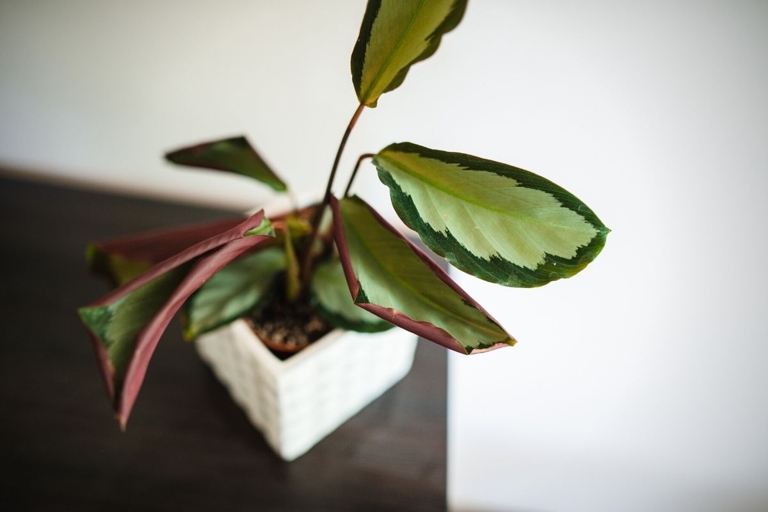
To avoid this, use filtered or distilled water to water your Calathea. In addition to not getting enough water, poor quality water can also cause Calathea leaves to droop. If the water you’re using to water your plant is high in chlorine or other chemicals, it can damage the plant and cause the leaves to droop.
If you think your Calathea is drooping due to poor water quality, try changing the type of water you’re using and see if the plant’s leaves start to perk up.
Water The Plant Using Rain or Distilled Water
Be sure to water your plant using rain or distilled water, as tap water can contain chemicals that can harm your plant. If your Calathea is drooping, it’s likely due to improper watering. Water your Calathea when the top inch of soil is dry, and be sure to empty any water that collects in the saucer beneath the pot. With proper care, your Calathea should perk back up in no time. If you see your Calathea drooping, check the soil and water accordingly.
Insufficient Light
These plants are native to the tropical forests of South America, so they need bright, indirect light to thrive. If your Calathea is drooping, it’s likely not getting enough light.
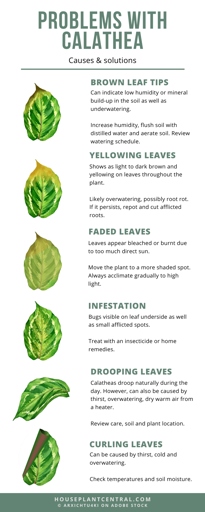
Place your Calathea about 12 inches beneath the light and leave it on for 12-16 hours per day. If your home doesn’t get a lot of natural light, you can supplement with grow lights.
Calathea like humid conditions, so try misting your plant daily or setting it on a pebble tray. If your plant is still drooping after increasing the light, it could be because the air is too dry.
Move The Plant To A Spot With Bright Indirect Light
But what do you do when your Calathea starts to droop? Calathea plants are known for their beautiful, brightly colored leaves.
If your plant is not getting enough light, it will start to droop. There are a few things that could be causing your Calathea to droop, but the most likely culprit is lack of light. Calathea plants need bright, indirect light to thrive.
If you can’t provide enough light for your plant, you may need to supplement with artificial lighting. The best solution is to move your plant to a spot with bright, indirect light.
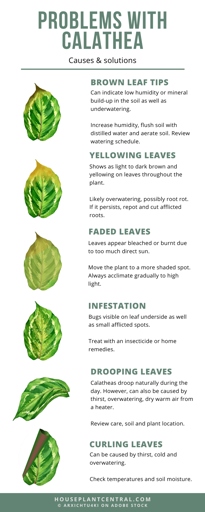
If your plant doesn’t start to perk up, there may be another issue at play. Check for signs of pests or disease and consult with a plant expert if necessary. Once you’ve moved your plant to a brighter spot, you should see an improvement within a few days.
Pests Sucks the Life Out of Your Calathea
These pests can suck the life out of your plant, causing it to become weak and unhealthy. If you notice your Calathea drooping, it could be a sign that pests are present. Pests are one of the most common problems when it comes to houseplants.
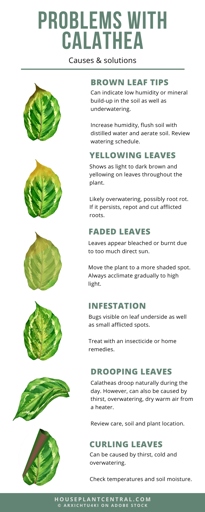
There are a few different types of pests that are known to attack Calathea plants. Each of these pests can cause different symptoms, so it’s important to be on the lookout for all of them. These include mealybugs, spider mites, and scale insects.
Scale insects are small, hard-bodied insects that attach themselves to the stems of plants. They can cause the leaves of your Calathea to turn yellow and drop off. Spider mites are tiny spider-like creatures that spin webs on the undersides of leaves. They can cause the stems to become weak and the leaves to drop off. They can cause the leaves to turn brown and drop off. Mealybugs are small, white insects that feed on the sap of plants.
You can start by spraying the plant with an insecticidal soap or neem oil. You can also try using a cotton swab dipped in rubbing alcohol to remove mealybugs and spider mites. If the infestation is severe, you may need to use a pesticide. If you think your Calathea has been attacked by pests, there are a few things you can do to get rid of them.
Pests can be a real pain, but with a little effort, you can get rid of them and keep your Calathea healthy and happy.
How to Get Rid of Calathea Pests
If you’re noticing your Calathea drooping, it may be a sign that there are pests on the plant. Here are a few ways to get rid of Calathea pests:
These pests can be found on the undersides of the leaves or in the crevices of the plant. 1. Check the plant for signs of pests, such as small whiteflies, aphids, or mealybugs.
If you see any pests, remove them by hand or with a cotton swab dipped in rubbing alcohol. 2.
3. Treat the plant with an insecticidal soap or neem oil to prevent further infestation.
4. Keep the plant healthy by watering it regularly and fertilizing it every few months. A healthy plant is less likely to be attacked by pests.
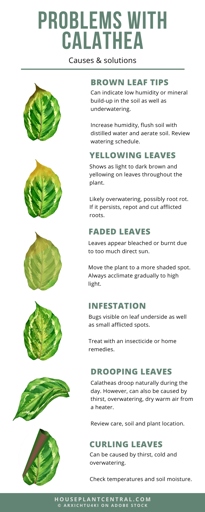
If you follow these steps, you should be able to get rid of Calathea pests and keep your plant healthy and happy.
Fungal Diseases Causing Droopy Calathea
If your Calathea is drooping, it could be a sign of a fungal disease. Fungal diseases are caused by fungi that live on the surface of the plant. They can cause the leaves to turn yellow, brown, or black, and the plant to droop.
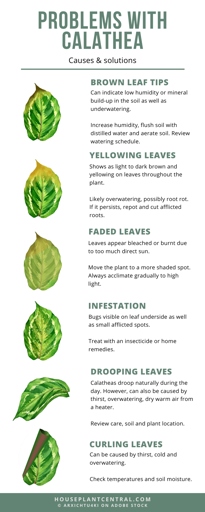
There are a few different types of fungal diseases that can affect Calathea. It can cause the leaves to turn yellow, brown, or black, and the plant to droop. This disease is caused by a fungus that lives on the surface of the plant. One is called powdery mildew.
It can cause the leaves to turn yellow, brown, or black, and the plant to droop. This disease is caused by a fungus that lives on the surface of the plant. Another type of fungal disease is called black spot.
The best way to prevent these diseases is to water your Calathea regularly and to keep the leaves dry. If you see any signs of a disease, you should remove the affected leaves and dispose of them. You should also contact a professional if the problem persists.
How to Fix
Here’s how to fix it: If your Calathea is drooping, it’s likely due to one of three things: too much sun, too little water, or too much fertilizer.
If your Calathea is drooping due to too much sun, move it to a shadier spot. And if it’s drooping due to too much fertilizer, cut back on fertilizing. If it’s drooping due to too little water, water it more frequently.
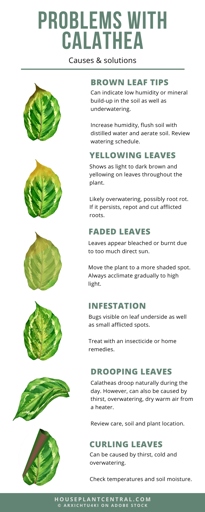
With a little trial and error, you should be able to figure out what’s causing your Calathea to droop and fix the problem.
Excess Application of Fertilizer
If you’ve ever had a houseplant that’s started to droop, you know the feeling of dread that comes with it. Or, in the case of calatheas, too much fertilizer? Could it be overwatering? Not enough light?
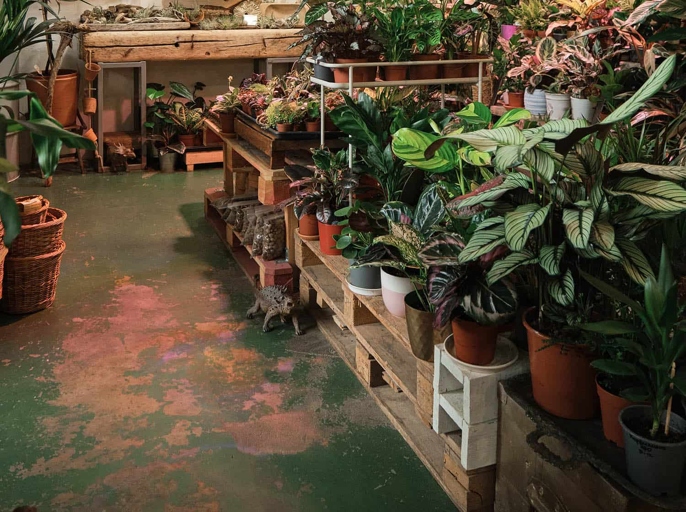
But if you apply too much fertilizer, the roots can’t take it all in and the plant starts to suffer. That’s right, too much of a good thing can actually be harmful to your calathea. When you fertilize your plant, you’re essentially giving it a boost of nutrients that it would normally get from the soil.
If you see this, it’s important to stop fertilizing immediately and flush the roots with clean water to remove any excess nutrients. The first sign of too much fertilizer is usually yellowing leaves. With proper care, your calathea should recover quickly.
Apply Fertilizer Sparingly
If you think your Calathea is drooping from too little water, give it a good watering, making sure to evenly moisten the soil. If it’s soggy or wet, it’s time to let the plant dry out a bit. If you think your plant is drooping from too much water, check the soil. If your Calathea is drooping, it’s likely due to either too much or too little water.
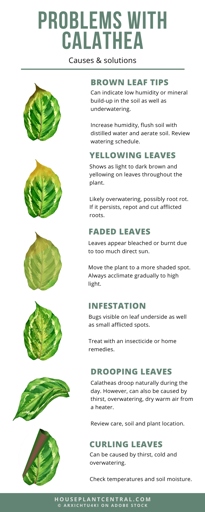
Once the soil has been flushed, reduce the amount of fertilizer you apply in the future. If you’ve recently applied fertilizer, or if you think the plant is getting too much fertilizer from its current location, flush the soil with water to remove any excess. Fertilizer can also cause drooping in Calathea plants.
Root Bound
Root bound is when the roots of a plant have become too crowded in their pot and can no longer adequately take in water and nutrients. If you notice your Calathea drooping, it’s likely due to root bound. This usually happens when a plant is left in the same pot for too long and the roots have nowhere to go but outwards.
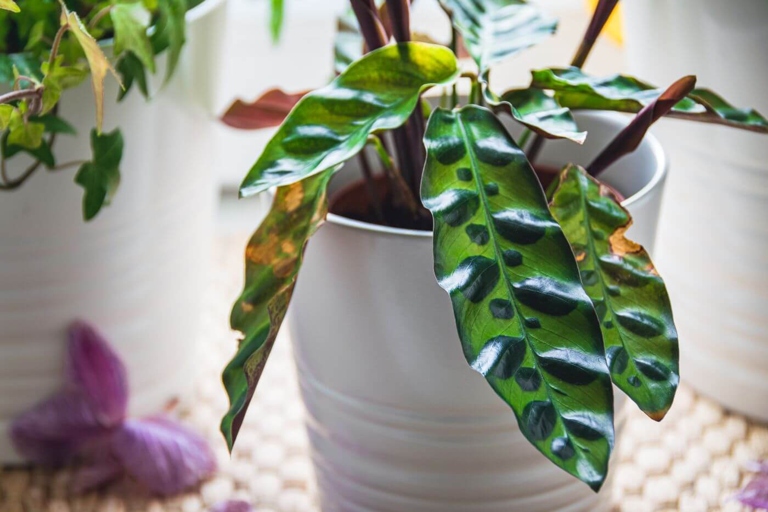
If you suspect your Calathea is root bound, the best solution is to repot it into a larger pot. Be sure to use fresh potting mix and water well. Once your plant is repotted, it should start to recover and look healthier within a few days.
Repot the Plant
If the potting mix is too dense, add some perlite or sand to the mix to improve drainage. Be sure to use a well-draining potting mix and water your plant when the top inch of soil is dry. Check the roots of your plant to see if they are crowded or if the potting mix is too dense. If the roots are crowded, it’s time to repot into a larger pot. If your Calathea is drooping, it may be time for a repot.
Why Is My Calathea Drooping After Repotting
Be sure to place your Calathea in a bright, indirect light location after repotting. Another possible reason for drooping is that the plant was not given enough light after repotting. This is common when plants are moved from one pot to another and can take a few weeks for the plant to recover. When repotting, be sure to water the plant thoroughly and then allow the soil to dry out completely before watering again. The most common reason is that the plant was not watered properly after repotting. If your Calathea is drooping after repotting, there are a few possible reasons. If the plant is still drooping after a few days, it may be suffering from transplant shock.
Frequently Asked Questions
1. Why is my Calathea drooping?
There are several reasons why your Calathea may be drooping. The most common reason is that the plant is not getting enough water. Other reasons can include too much sun, too much fertilizer, or pests.
2. How often should I water my Calathea?
Calathea should be watered about once a week, or when the soil is dry to the touch. Be sure to check the soil before watering, as overwatering can also cause drooping.
3. What type of light does Calathea need?
Calathea prefer indirect light, but can tolerate some direct sun. If your plant is getting too much sun, it may start to droop.
4. What type of fertilizer should I use for my Calathea?
Use a balanced fertilizer that is low in nitrogen. too much nitrogen can cause the leaves to yellow and the plant to droop.
5. I think my Calathea has a pest problem. What should I do?
If you think your Calathea has a pest problem, inspect the plant carefully. Common pests include mealybugs, spider mites, and scale. If you find any pests, you can try treating the plant with an insecticidal soap or neem oil.
Final thoughts
If your Calathea is drooping, it’s likely due to one of the following reasons: too much direct sunlight, not enough humidity, or over- or under-watering. Luckily, all of these problems are easy to fix. Simply move your plant to a spot with more indirect light, increase the humidity around it, or adjust your watering schedule. With a little TLC, your Calathea will be back to its vibrant self in no time.
